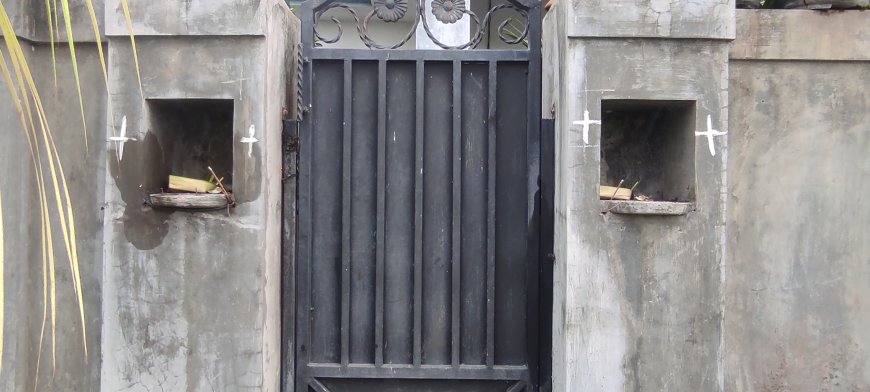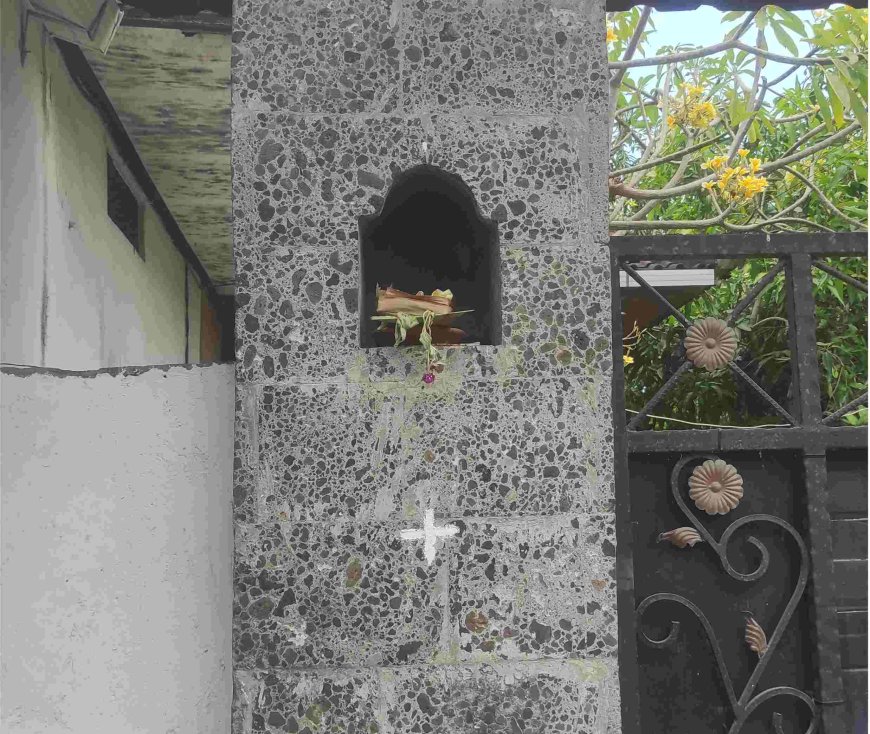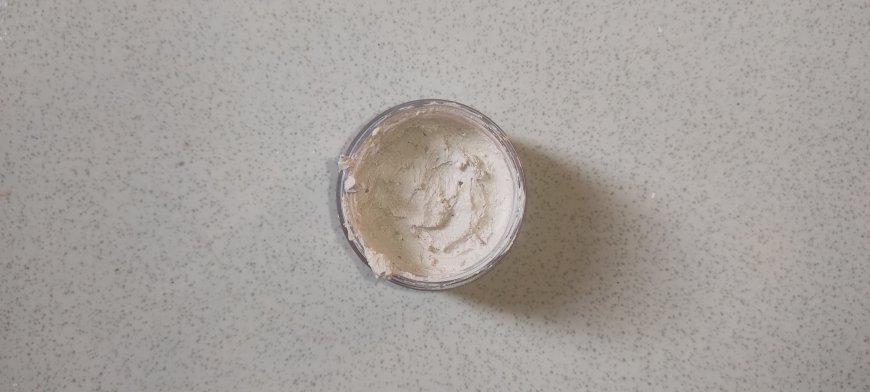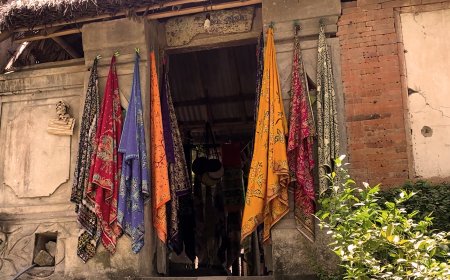Tapak Dara : Balinese Cultural Heritage as a Symbol of Natural Balance
Tapak Dara is a simple plus-shaped symbol (+) rich in profound meaning within Balinese culture. It symbolizes the balance between the physical and spiritual worlds, as well as the connection between humans and the universe. This symbol is widely used in various aspects of Balinese life. Beyond its philosophical significance, Tapak Dara is also believed to possess magical powers, acting as a protector against negative energies and bringing good fortune. It is often found on homes, vehicles, and even on the body as a symbol of protection.

Tapak Dara, also known as Tampak Dara or Tatorek, is a symbol rich in meaning and deeply rooted in Balinese culture. Its form is simple: just a vertical and horizontal line intersecting to form a plus sign (+). However, behind this simplicity lies a profound meaning that has become ingrained in the life of the Balinese people. This symbol is a familiar sight in everyday life, appearing in everything from sacred religious ceremonies to simple ornaments on the walls of houses. Tapak Dara serves as a reminder of the noble values held dear in Balinese society. Its widespread presence indicates the significance of this symbol within the social and spiritual structure of the Balinese community.
The origins of Tapak Dara are the subject of various interpretations and analyses. Some sources associate it with the Hindu-Balinese cosmology, which views the universe as a harmonious whole. The vertical line might symbolize the relationship between humans and the infinite universe, while the horizontal line represents the balance between the physical and spiritual worlds. The initial meaning of Tapak Dara is also linked to the concept of balance and unity, seen as a representation of the basic principles of life—balance between opposing forces and unity between humans and the universe. Tapak Dara is not just a graphic symbol it reflects a deep life philosophy for the Balinese people, containing intertwined cosmological, spiritual, and social meanings.
In the concept of Tri Hita Karana, which forms the philosophical foundation of Balinese life, Tapak Dara reflects the balance between human relations with God (Parhyangan), humans with each other (Pawongan), and humans with nature (Palemahan). The vertical line symbolizes the spiritual connection, the horizontal line represents social relations, and the implied underlying line illustrates the relationship with nature. Additionally, the symbol embodies the concept of Rwabhineda, or united duality. In Balinese philosophy, everything in the universe has its counterpart or opposite. Tapak Dara, with its intersecting lines, represents this concept, where two opposing forces complement each other and create harmony. Tapak Dara also has a strong connection to Balinese cosmology, particularly with Mount Agung, the highest mountain in Bali, considered the island's spiritual center. The vertical line can be interpreted as the axis mundi connecting the earth with the heavens, while the horizontal line represents the vast universe.
 The Tapak Dara Symbol on a Resident's House (Source: Private Collection)
The Tapak Dara Symbol on a Resident's House (Source: Private Collection)
Beyond its spiritual significance, Tapak Dara also serves as a symbol of protection. The Balinese believe that this symbol possesses magical powers to ward off negative energies and bring good fortune. Tapak Dara is often used as a protective charm, believed to safeguard individuals or places from disasters such as illness, misfortune, or disturbances from malevolent spirits. Additionally, the symbol is believed to bring peace and tranquility, especially in sacred places like pura (temples) or prayer sites. In Hindu Balinese religious ceremonies, Tapak Dara is often used as a means to seek protection and blessings from the divine, frequently appearing on banten, canang sari, and various other ceremonial tools.
Tapak Dara is often drawn or inscribed on doors, windows, or house walls as a protective symbol for the residents. This symbol can also be found on vehicles as a means of seeking safety during travels. Some individuals even draw Tapak Dara on their bodies as a form of self-protection from negative energies or danger. The belief in the magical power of Tapak Dara is closely tied to the spiritual concepts of the Balinese people. The symbol is regarded as a manifestation of cosmic forces that offer protection and good luck. Moreover, the use of lime powder in the creation of Tapak Dara is believed to have special properties in warding off negative energies.
 Lime Powder Mixed with Water (Source: Private Collection)
Lime Powder Mixed with Water (Source: Private Collection)
To create Tapak Dara, the materials needed are lime powder and water. Lime powder is used to draw the lines of Tapak Dara, as it is believed to hold magical powers to repel negative energies. Water is mixed with the lime powder to make it easier to apply. The first step is to mix a small amount of lime powder with water to form a paste that is neither too thin nor too thick. Using a finger, draw the Tapak Dara on the desired surface and allow it to dry naturally to maximize its protective function.
Tapak Dara is not merely a symbol; it is a cultural heritage rich with meaning, reflecting the balance and harmony that lie at the heart of Balinese life. This symbol emphasizes the importance of maintaining good relationships between humans and God, fellow humans, and the universe. In every line of Tapak Dara, there is a profound message of harmony between the spiritual, social, and natural dimensions. Amid the dynamics and challenges of modern life, the values of balance represented by this symbol remain relevant, reminding us of the importance of maintaining harmony in all aspects of life, whether in personal relationships or in our interactions with the environment. Through Tapak Dara, we are called to always seek balance, not only for ourselves but also for the continued harmony of the broader world.





























































